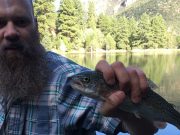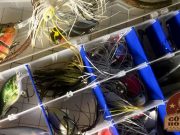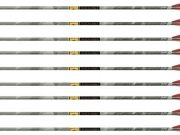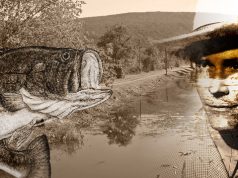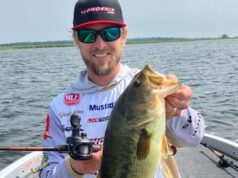This week we are pleased to bring you some tips on Backcountry “Guerrilla Fishing”, with backcountry fishing expert Ryan Weaver.
Can you tell me a little bit about yourself and how you got into fishing?
My dad fished trout and redfish tournaments professionally while I was a kid, and he taught me a lot through the years. Growing up, we always fished rivers and lakes around the Texas Hill Country, and he got me hooked on saltwater fishing during my teenage years. We now fish redfish tournaments professionally around the Gulf Coast and just won our second IFA event since 2011.
Recently, I started an adventure travel company that offers adventures and exotic fishing trips to extraordinary destinations. One of the major perks of owning Paragon Expeditions is that it enables me to travel quite a bit. I’ve fished all over the world, from Patagonia to Ghana to Nicaragua’s remote Pacific coastline. I spend just about all of my free time fishing a remote stretch somewhere around the world.

When fishing in the backcountry, or in areas that are unfamiliar, what tactics do you use?
First and foremost, I always try and study the water to see what I’m working with. My approach is always contingent upon water clarity and depth. If I’m fishing a murky stream, a lot of times I’ll slow down and focus on specific sections. I prefer obnoxious lures and flies when the water is stained, and I’ll often throw a big topwater or popper to wreak havoc on the surface and hopefully initiate a strike.
For the most part I try to avoid off-color water and focus on clear stretches of river. This is really where I thrive. I love using my eyes as my weapons, covering water, and spotcasting to fish. I call it “guerrilla fly-fishing” because its all about stealth and mobility.

When looking for the perfect fishing spot, are there certain characteristics that you look for?
The “fishy” zones vary quite a bit depending on the type of fish you’re targeting and the particular body of water that you’re fishing. Generally speaking, fish are going to hold in areas where they can ambush prey but also have some sort of structure nearby so they can evade potential predators.
If I’m targeting big trout or smallmouth, I always look for an area with small deep pockets with structure and close access to moving water.
On the other hand, largemouth bass, gar, and a number of other species often prefer slower moving water, so you really need to know what you’re targeting and how that specie tends to behave beforehand.

When fishing in the backcountry, what safety precautions do you take?
Regardless of where you’re located, there are always dangers of some sort if you’re fishing the backcountry. I’ve had big rattlesnakes swim towards my kayak and stumbled upon 100-pound mountain lions while hiking along remote cliffs. Needless to say, there are myriad potential dangers in the backcountry, and I always try to remain cautious.
I always carry plenty of water and a first aid kit in my backpack. If I’m fishing in the mountains, I bring a can of bear spray in case I end up between a big female and her cub.

Can you tell me a little bit about your “guerrilla approach” towards fly-fishing?
In battle, the guerrilla fighter is surreptitious, sneaky, and extremely mobile. I apply these same “guerrilla tactics” to fly-fishing when I’m on a clear water stream or river. Armed with cutting-edge polarized shades, I pace along the side of the river, keeping my eyes fixed on the water until I locate a fish.
In clear water streams, fish know that predators of all sorts are constantly targeting them, so in order to be an effective angler it is essential that you remain unseen. Whether you’re fishing for 24” cutthroats deep in the Teton Wilderness or ferocious smallmouths on a remote stretch of the Devils River, stealth is always the name of the game. Often times I hike on top of a ledge with my eyes glued to the water, studying the stream and looking for eddies and inlets where fish may post up to ambush prey.
As soon as I see a fish worth targeting, I drop to the ground to ensure that I won’t be seen while constantly keeping an eye on the fish. I then plot out my next maneuver. If I’m fly-fishing and am surrounded by brush and thicket, often times the most strategic approach is to simply wait and see if the fish moves into a more favorable position to make a cast. On the other hand, if the fish is on the hunt in the shallows, the best bet may be to get a fly in the water as soon as possible while the fish is within reach.
These guerrilla fishing tactics are effective on just about any clear water steam for just about any type of game fish. Remember that your eyes are your greatest weapons, so be sure to invest in a good pair of polarized shades before taking off into the wilderness. You’re crippled without them.

Do you take a different approach, or change your style of fishing when going after the monsters?
A lot of times I specifically use the guerrilla approach to target trophy fish. On a trophy hunt, I’ll hike along the river for several miles, often bypassing countless smaller fish and sometimes not making a single cast for hours. The perseverance pays off though, and I almost always encounter a big fish sooner of later.
When I do spot a trophy, I’m often extra sneaky and make sure I lay down a good cast without being seen. Nothing is worse than hiking for hours and blowing it when you finally get your shot at a trophy.
The fly is also important to keep in mind. Though dry flies and poppers may be a more elegant, sophisticated way to catch fish, the guerrilla fisherman knows that streamers are the most effective weapons if you’re looking to spot cast to a trophy fish. And size does matter. Large fish like big flies, so I often throw meat whistles and big wooly buggers. A good friend of mine has caught 25 species of fish on a mouse imitation. If you’re stealth and lay down a good cast with a formidable object, the fish will likely inhale it regardless of how pretty the fly looks. I’ve even heard stories of fly fisherman catching enormous pike on tampons in the Northwest Territories.


 <
<













